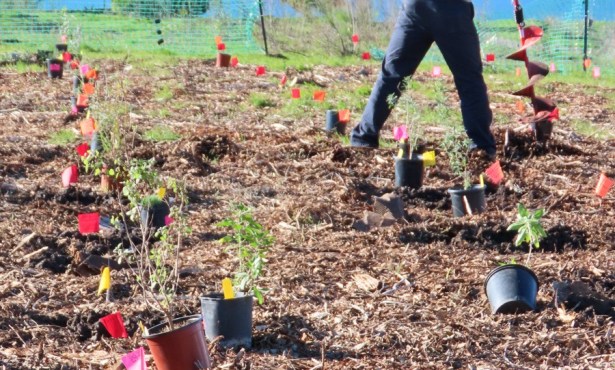Parma Park Restoration Could Take Years
Almost All Park's Vegetation Burned During Tea Fire
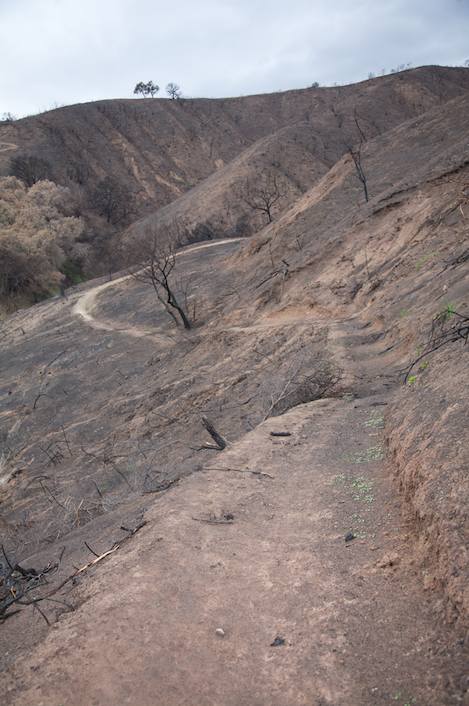
While just across Stanwood Drive, attention is focused on helping homeowners on Conejo Drive cope with their losses, Santa Barbara City Parks and Recreation officials are determining how to cope with the impact of the Tea Fire on Parma Park.
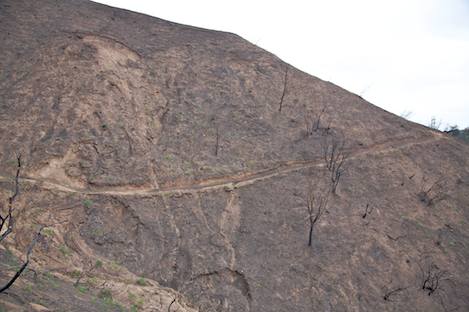
“Almost everything burned to mineral soil,” Jill Zachary, assistant parks director, explained. “So far we’ve focused our efforts at dealing with immediate problems like clearing out the drainages and storm basins and reinforcing the hillsides to keep mud and debris from flowing down onto Stanwood Drive. We’ve also sprayed hydromulch on portions of the hillsides to help keep them from eroding as well, but rehabilitating the park will be a long-term effort.”
The 200-plus acres that make up Parma Park were once owned by the Parma family. G.B. Parma came to Santa Barbara more than 120 years ago, established a grocery store on State Street, and promptly bought the tract of land in what was then the “far hills.” Parma raised goats on the property. Apparently it was the goats, intent on foraging the hillsides, which decided where the trails would go.
In 1973 Harold and Jack Parma, sons of the elder Parma, gave the land to the city to establish a natural preserve. “The community has been nice to us,” Harold reminisced, “and we’ve been here so long. Every community should have some open space. I think it’s precious, something we could do in return for the community.” City Parks and Recreation manages the park in close cooperation with the Parma Trust, which provides much of the funding to maintain the park.
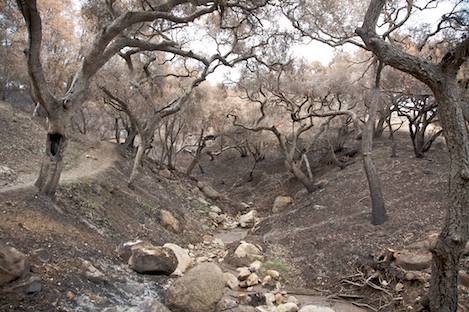
Currently, all of the Parma trails are closed to the public until park officials have an opportunity to assess the damage and determine if they are safe for use. “Because so much of Parma has been completely opened up by the fire, we need to make sure people will stay on the trails once they are re-opened,” Zachary noted, “and we need to keep people from walking through the areas coated with the hydromulch.”
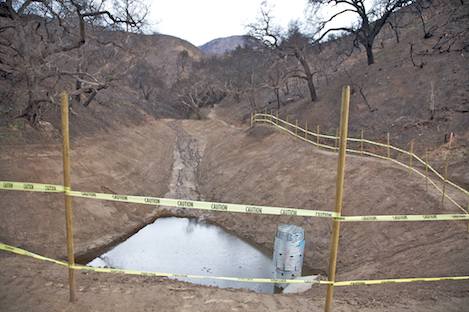
Zachary also said that the trail on the southeastern part of the park that cuts along steep hillsides is particularly prone to slides and could become extremely hazardous if the hillsides slump even more. There is also a point at which the trail passes across the upper lip of a fairly deep drainage basin. “We just can’t take a chance that someone could slip into it,” Zachary added.
A walk around the perimeter of Parma Park confirmed the extent of the damage the Tea Fire has caused. From the main entrance on Stanwood I followed the dirt road north for a hundred yards to an opening that contains a large picnic area. The dirt road continues north toward the mountains, essentially dividing the park into eastern and western sections. On the west end the trails duck into oak groves as they follow small drainages and circle around open, grass-filled hills. While the oaks survived, much of the rest of the vegetation is almost completely gone. Being an oak-grassland type of environment, however, this part of the park will recover the easiest.
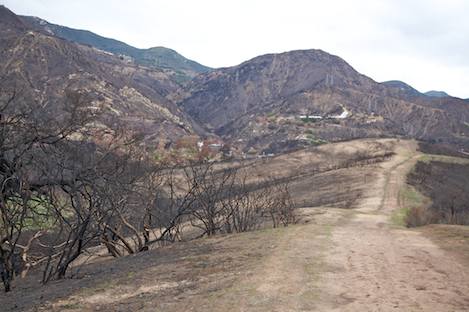
Several of the westside trails lead up to Mountain Drive, but if you stay in the park, eventually others will take you in a counterclockwise direction back to the dirt road and the east end of the park. Here, the hills are much steeper and though these had been dominated by sages and chaparral-type vegetation prior to the fire, not much is left now-with the exception of a picnic table and hitching post at the high point in the park. Post-fire, the vegetation has been reduced to moonscape: There is none anywhere, just bare soil.
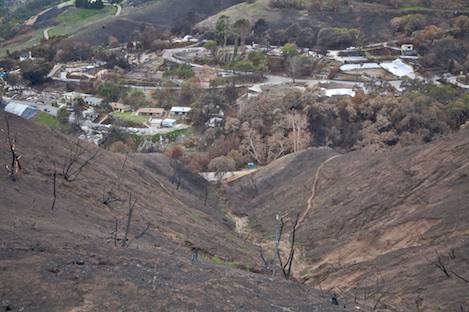
Looking down perhaps 400 feet of steep hillside toward Stanwood Drive, the soil appears on the verge of collapsing. There are numerous places where sections appear ready to fail and given one good downpour they might. In the past few years a trail has been cut above Stanwood and parallels it back to the picnic area. From below, without vegetation, the hillsides have an even more naked, vulnerable look to them. The trail is still passable but it won’t be soon.
From my quick trip around the perimeter of Parma Park, it is clear Parks and Recreation will need to invest a serous amount of time and money to rehabilitate the area. “We’re working on the development of a Rehabilitation Plan for Parma,” Zachary explained in a later phone conversation. “We’ve asked FEMA for a half-million dollars. Part of it is to recover our initial costs for stream clearing, the hydromulching, and the erosion control measures we’ve taken to protect Stanwood Drive, but most of it is to work on long-term measures to protect the trails, restore the native vegetation, and to stabilize the hillsides.”
Zachary also explained that once FEMA receives a request for funds for a federally declared disaster such as the Tea Fire, the agency reviews the request and then conducts a site visit to determine how much, if any, of the funding will be approved. This should happen in early January. “Hopefully we’ll know how many of the projects we’ve identified in our plan of work that FEMA will fund by the start of February,” Zachary added. “Rehabilitating Parma isn’t an overnight process. We need to start on the work as soon as we can.”
One of the few open spaces within the city this size, Parma Park is one of the crown jewels of the City Parks and Recreation Department. Once it is re-opened for use, not only will it provide you with an opportunity to enjoy a splendid hike but to watch the post-fire recovery process as it occurs over the next few years.
411
Check the Outdoor site for details about hiking in Parma Park or to view photos of the fire damage there.



